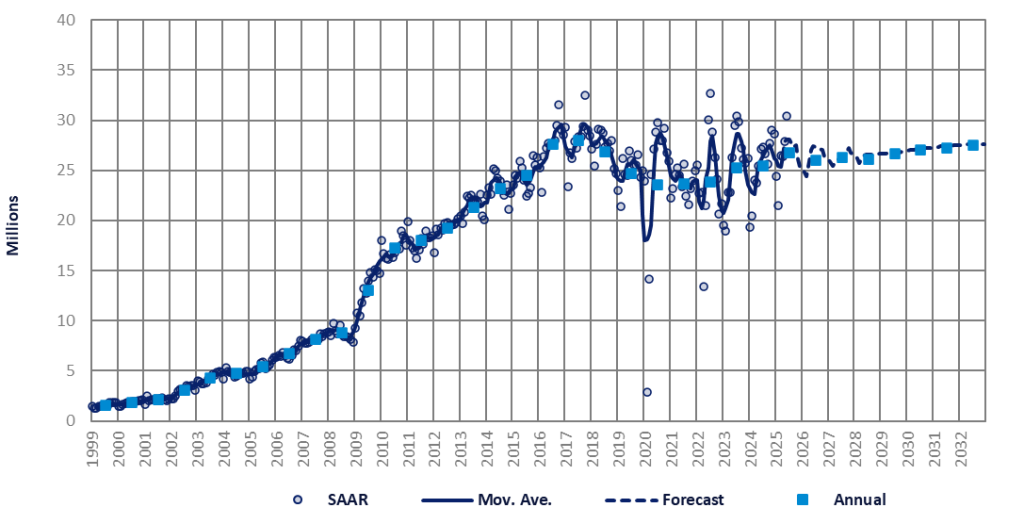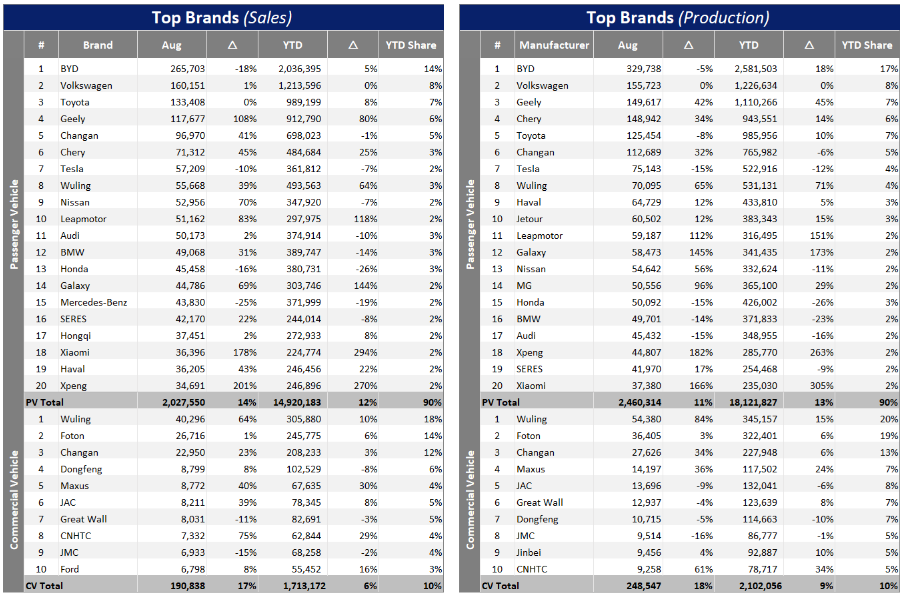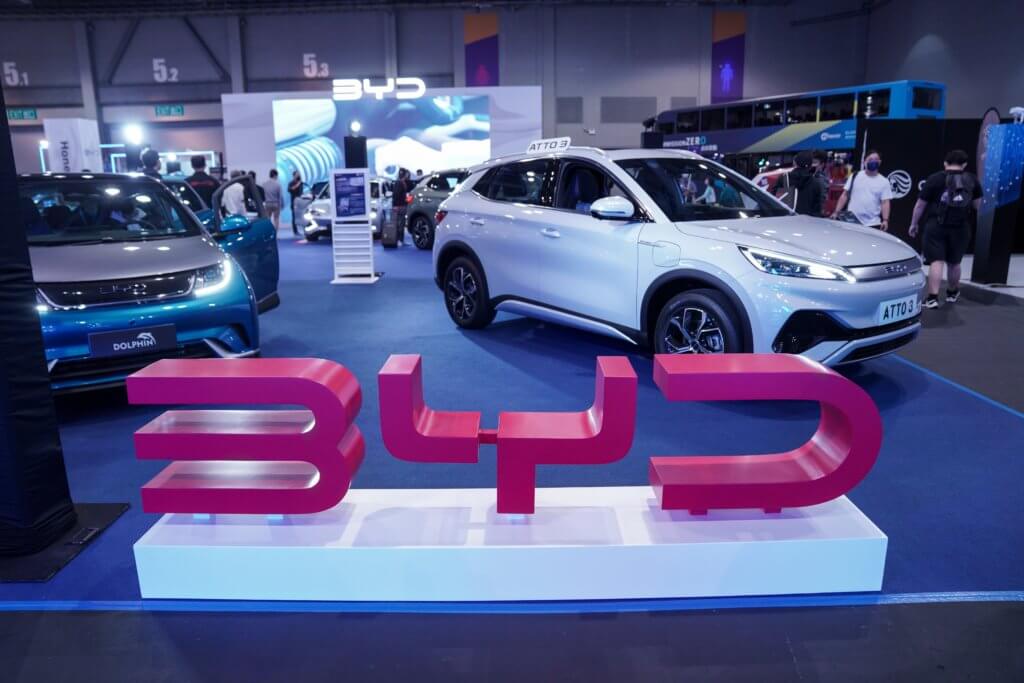China’s LV market showed notable resilience in August 2025—a period typically characterized by sluggish sales—with volumes increasing by 14% YoY to 2.2 million units.

This growth was primarily driven by PVs, which rose by 14% to 2.0 million units, while LCVs also contributed with an expansion of 17% YoY, amounting to 191k units. For January-August as a whole, sales grew by 12% compared to the same period in 2024. The market is increasingly being shaped by an “anti-involution” trend, leading to a more stable operating environment with an ease in price wars and more subdued promotions. Instead of aggressive discounting, competition has intensified through hidden measures such as enhanced model specifications and adjusted owner benefits. In addition, national subsidy programs for vehicle replacement and the exemption of purchase tax for NEVs have supported the market in achieving steady growth, which was reflected further through the significant reduction of inventory. The seasonally adjusted annualized selling rate for August was 30.0 million units/year, which remains at a historically high level and reinforces the pattern of a weak start, strong middle, and stable end for the year.

In terms of production, China’s LV output reached 2.7 million units in August, a YoY increase of 11.4%. PVs, which accounted for 90% of the total, rose by 10.9% YoY to 2.5 million units, underscoring sustained consumer demand and market resilience, while CV production also grew by 17.5% YoY to 249k units. Chinese OEMs produced a total of 2.0 million units, achieving YoY growth of 19.6%, yet JV OEMs exhibited a weaker performance, with a decline of 5.2%. Overall, the LV market expanded by 12.1% YoY across the first eight months of 2025.
Amid ongoing efforts to curb excessive competition within the industry, Chinese automakers are actively preserving relative price stability in the market, which has led to further stabilization of production rhythms. Concurrently, the national vehicle trade-in policy has offered substantial support to domestic production, significantly enhancing the output of compliant and replacement-oriented models. In addition, continued export growth—particularly to emerging markets in Southeast Asia and Latin America—has been driving additional production volume, offsetting fluctuations in certain regional markets and contributing to a steady expansion of manufacturing plans.
In August 2025, China’s LV exports reached 570k units, a rise of 16.6% YoY and 4.7% MoM. PVs were the primary contributor, with shipments up by 18.7% YoY to 521k units. On the other hand, CV exports declined slightly by 1.7% YoY to 49k units. In January-August as a whole, shipments reached 4.0 million units, a 27.5% increase compared to the same period last year.
Recently, the Chinese government, led by the Ministry of Industry and Information Technology (MIIT) along with seven other departments, officially launched the “Automotive Industry Stabilizing Growth Work Plan (2025-26).” This initiative aims to consolidate the recovery and growth of the automotive sector, with a core objective of stabilizing growth while accelerating transformation.
The goal is not only to increase vehicle sales but also to steer the industry toward a smarter, more sustainable future centered on intelligent, connected NEVs.

US Tariffs are shifting - will you react or anticipate?
Don’t let policy changes catch you off guard. Stay proactive with real-time data and expert analysis.
By GlobalDataIn this report, we have adjusted our short-term forecast for the Chinese market to incorporate the increased likelihood of the trade-in subsidy program extending through 2026, which now forms part of our latest baseline. With the 2026 China PV market outlook increasing by 1.7 million units, we are issuing an interim forecast update for the Global Light Vehicle Sales Forecast and Asia-Pacific Light Vehicle Sales Forecast data files, with only the forecast for China being updated.
China’s PV outlook has been adjusted in relation to several factors:
The acceleration of volume in the run up to the subsidy deadline has now been shifted from 2025 to 2026. Despite this, we still see 2025 totals exceeding our previous expectations due to the latest available market data and the ongoing strength of selling activity, notably supported by the price war. Government steps to de-escalate the price war will eventually see prices rising but consumers are expected to continue to take advantage of lower costs in the near term.
For 2026, consumers will benefit from the assumed trade-in extension as well as the ongoing NEV tax reductions, even though next year will see this tax discount starting to taper. We assume a flat market for 2026 versus 2025, as the government looks to continue stability.
We forecast a significant YoY fall in volumes in 2027, as a result of payback from trade-in support ending the year before, even though the market will still see some NEV taxation relief (until December 2027). The consequence of higher activity in the next few years, and then the ending of government support, will be a weaker market in 2028-30, as the industry becomes more self-reliant.


This article was first published on GlobalData’s dedicated research platform, the Automotive Intelligence Center.



